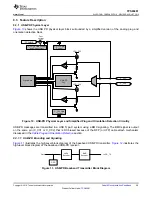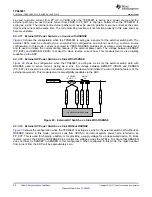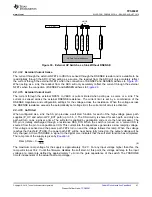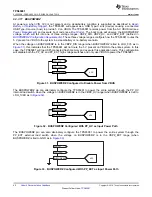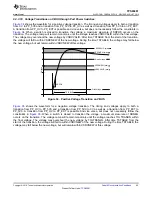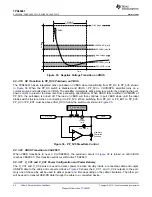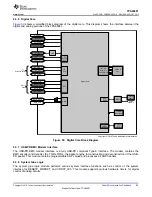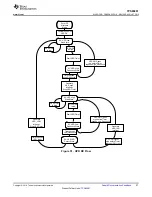
BUSPOWERZ
ADC
LDO_3V3
LDO_1V8D
BUSPOWERZ
ADC
LDO_3V3
LDO_1V8D
BUSPOWERZ
ADC
LDO_3V3
LDO_1V8D
42
SLVSDC2B – FEBRUARY 2016 – REVISED AUGUST 2016
Product Folder Links:
Copyright © 2016, Texas Instruments Incorporated
9.3.3.17 BUSPOWERZ
At power-up, when VIN_3V3 is not present and a dead-battery condition is supported as described in
, the TPS65981 will appear as a USB Type-C sink (device) causing a connected
USB Type-C source (host) to provide 5 V on VBUS. The TPS65981 receives power from the 5-V VBUS rail (see
) and execute boot code (see
). The boot code will observe the BUSPOWERZ
voltage, which will fall into one of three voltage ranges: VBPZ_DIS, VBPZ_HV, and VBPZ_EXT (defined in
BUSPOWERZ Configuration Requirements
). These three voltage ranges configure how the TPS65981 routes the
5 V present on VBUS to the system in a dead-battery or no-battery scenario.
When the voltage on BUSPOWERZ is in the VBPZ_DIS range (when BUSPOWERZ is tied to LDO_3V3 as in
), this indicates that the TPS65981 will not route the 5 V present on VBUS to the entire system. In this
case, the TPS65981 will load SPI-connected flash memory and execute this application code. This configuration
will disable both the PP_HV and PP_EXT high voltage switches and only use VBUS to power the TPS65981.
Figure 31. BUSPOWERZ Configured to Disable Power from VBUS
The BUSPOWERZ pin can alternately configure the TPS65981 to power the entire system through the PP_HV
internal load switch when the voltage on BUSPOWERZ is in the VBPZ_HV range (when BUSPOWERZ is tied to
LDO_1V8D as in
).
Figure 32. BUSPOWERZ Configured With PP_HV as Input Power Path
The BUSPOWERZ pin can also alternately configure the TPS65981 to power the entire system through the
PP_EXT external load switch when the voltage on BUSPOWERZ is in the VBPZ_EXT range (when
BUSPOWERZ is tied to GND as in
).
Figure 33. BUSPOWERZ Configured With PP_EXT as Input Power Path


